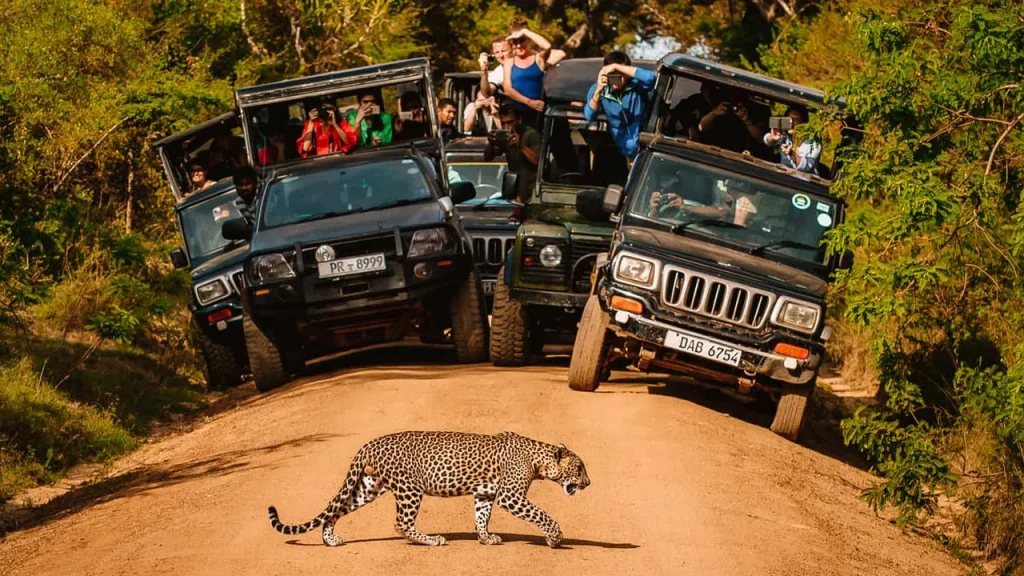Introduction
Sri Lanka, often called the pearl of the Indian Ocean, is one of the most captivating wildlife destinations in the world. Despite being a relatively small island, it boasts 26 national parks covering over 5,700 square kilometers. These parks are carefully protected by the Sri Lanka Department of Wildlife Conservation, ensuring that native flora and fauna thrive in their natural habitats.
For wildlife enthusiasts, Sri Lanka offers a diverse range of species, including elephants, leopards, sloth bears, spotted deer, and an array of endemic birds and reptiles. Among these, the Sri Lankan leopard (Panthera pardus kotiya) is arguably the star attraction. This endangered subspecies is found only in Sri Lanka and has become the centerpiece of many safari tours.
Whether you’re an experienced wildlife photographer or a first-time safari-goer, spotting a leopard in the wild is an unforgettable experience. In this guide, we will explore the top three national parks in Sri Lanka where you have the best chances to see leopards and other incredible wildlife.
1. Yala National Park
Location: Southeast Sri Lanka
Size: 979 square kilometers
Best Time to Visit: February to July
Highlights: Leopard sightings, dry forests, grasslands, rivers, waterholes
Yala National Park is the most famous national park in Sri Lanka and arguably one of the best places in the world to spot leopards. It is divided into five blocks, each with its own unique ecosystem ranging from dry woodlands and grasslands to dense forests and lagoons. Two rivers, the Menik River and Kumbukkan Oya, flow through the park, attracting wildlife to their banks.
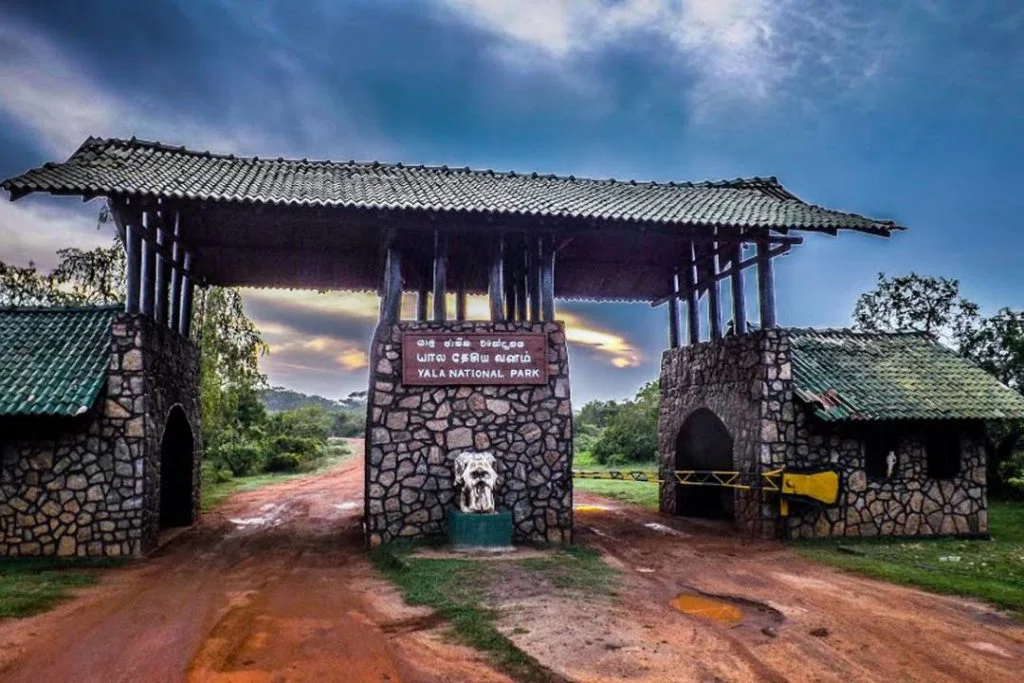
Wildlife in Yala
Yala is home to over 32 mammal species, including:
- Leopards – the elusive main attraction
- Sri Lankan elephants – often seen near waterholes
- Sloth bears – rare but occasionally sighted
- Wild boar, sambhur deer, and spotted deer
The park also supports 125 species of birds, ranging from eagles and owls to peacocks and herons. Reptiles like crocodiles and monitor lizards can also be spotted near water bodies.
YLeopard Safari Experience
A jeep safari in Yala is an adventure like no other. Leopards are most active during the early morning and late afternoon, especially near shrinking waterholes at the end of the dry season. Experienced guides track leopards by observing signs such as paw prints, territorial markings, and prey activity.
Pro Tip: For photography, the golden hours just after sunrise or before sunset provide the best light and highest chances of spotting wildlife.
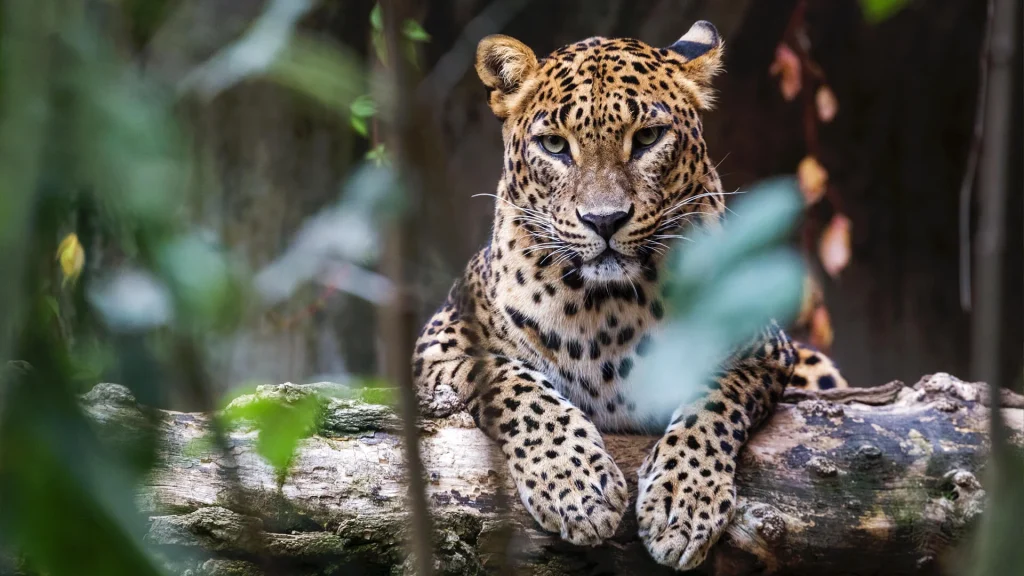
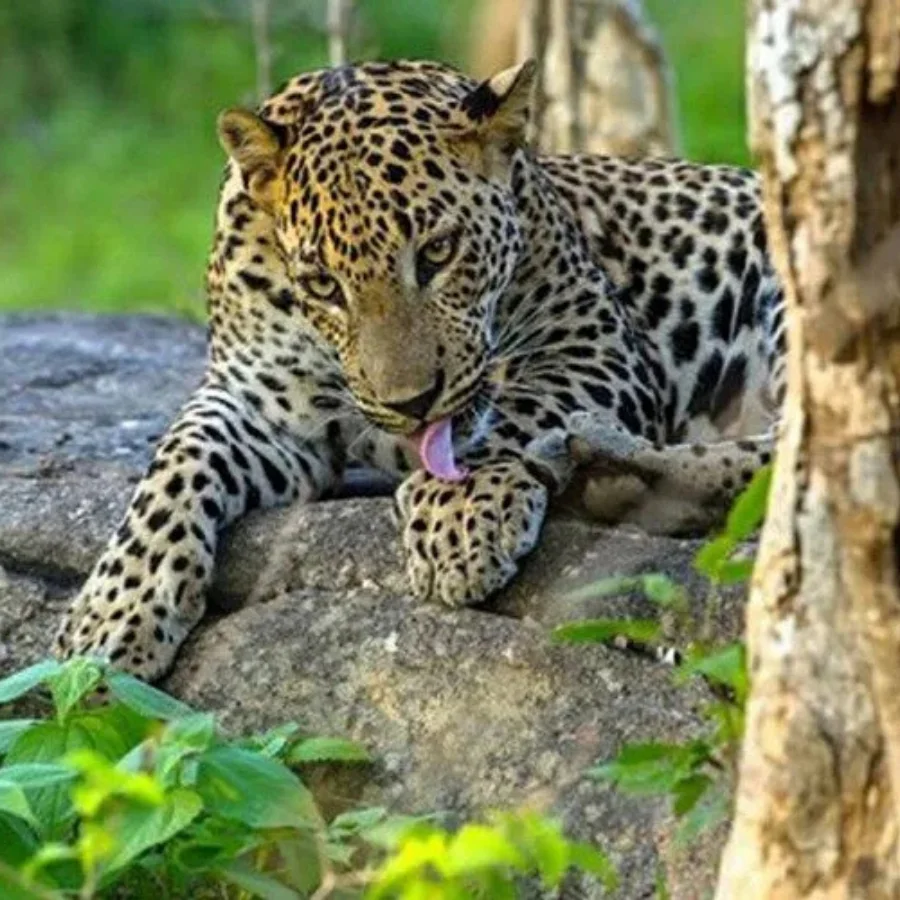
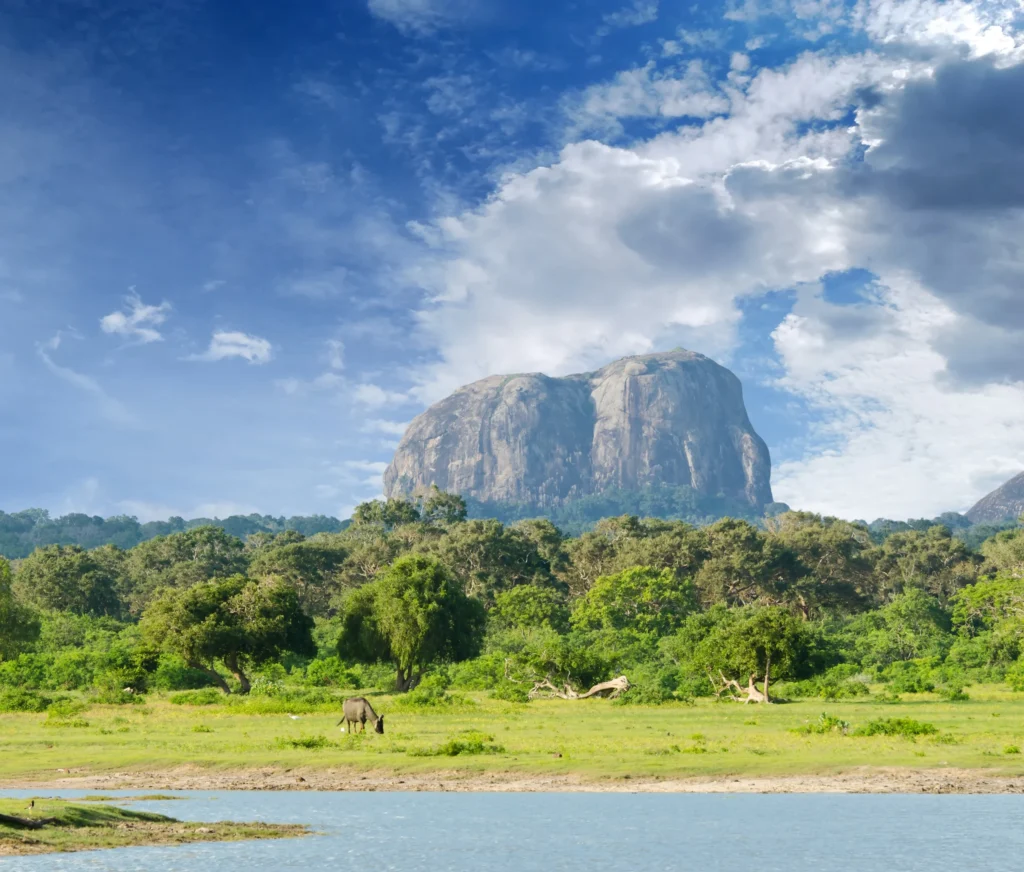
2. Wilpattu National Park
Location: Northwest of Anuradhapura
Size: 1,317 square kilometers
Best Time to Visit: March to September
Highlights: Waterholes (Willus), gravel roads, big four wildlife
Wilpattu is the largest and oldest national park in Sri Lanka, known for its unique waterholes called “Willus”, which attract animals from across the forest. This park offers a more secluded safari experience compared to the crowded Yala, making it ideal for travelers seeking privacy and tranquility.
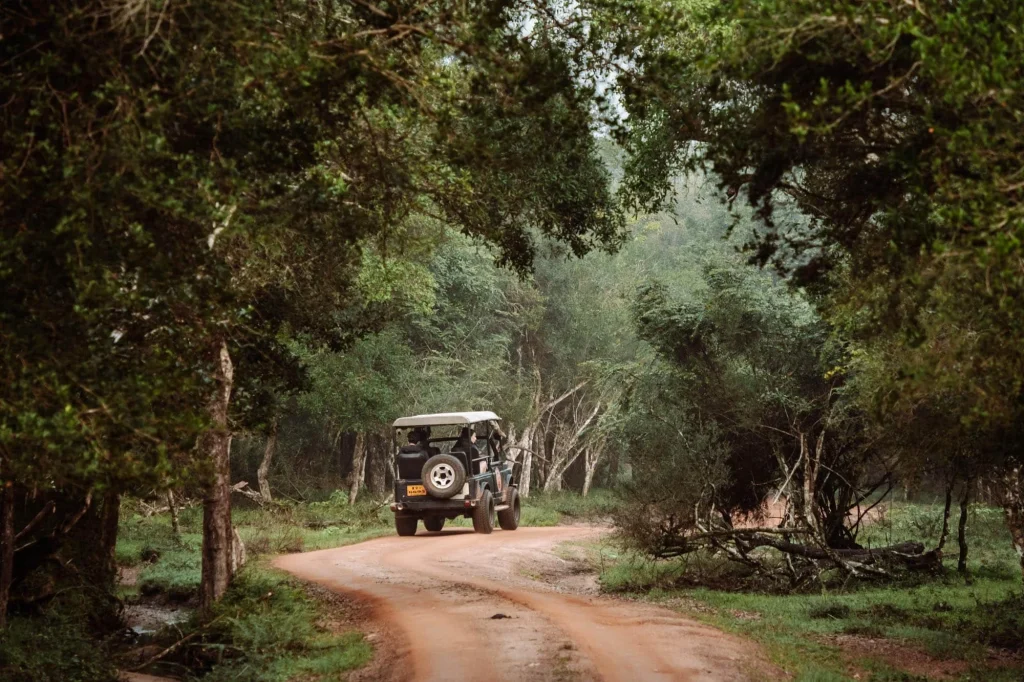
Wildlife in Wilpattu
Pro Tip: A half-day safari is usually sufficient, but full-day safaris increase your chances of seeing a leopard multiple times.
Wilpattu is home to the big four of Sri Lankan wildlife:
- Leopards – often seen gliding through dense forest undergrowth
- Elephants – roaming in herds
- Sloth bears – rare but occasionally spotted
- Deer species – spotted deer and sambhur
The park also hosts mangrove species, endemic birds, and reptiles, making it a biodiversity hotspot.
Leopard Safari Experience
The park’s gravel roads make jeep safaris smooth and accessible. Leopards in Wilpattu are often observed:
- Crossing the forest roads silently
- Resting in shaded undergrowth
- Hunting near Willus during dry months
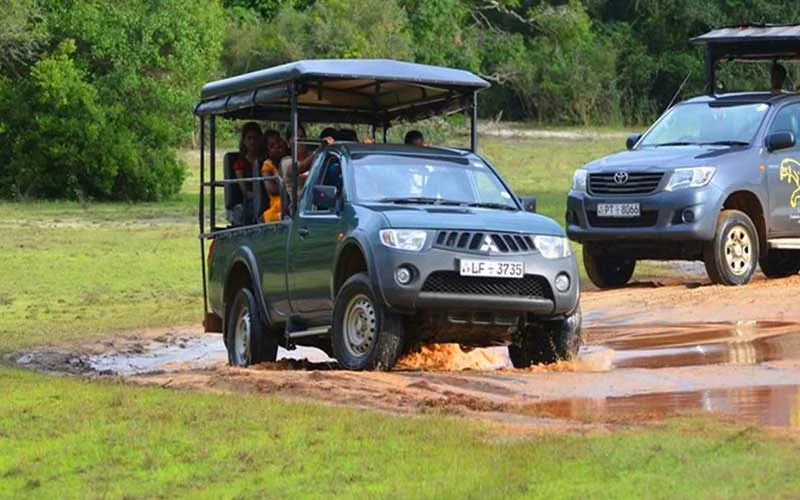
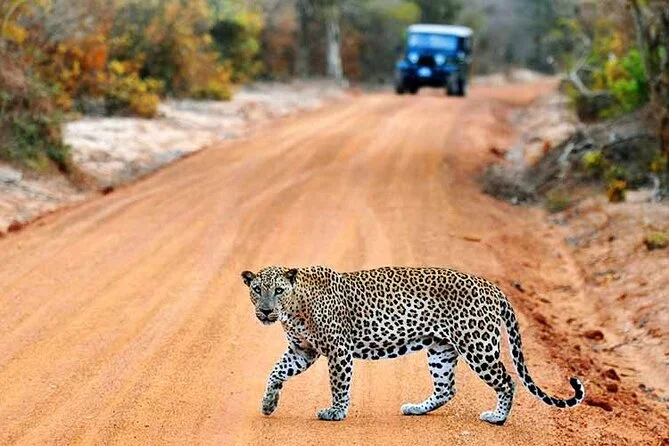
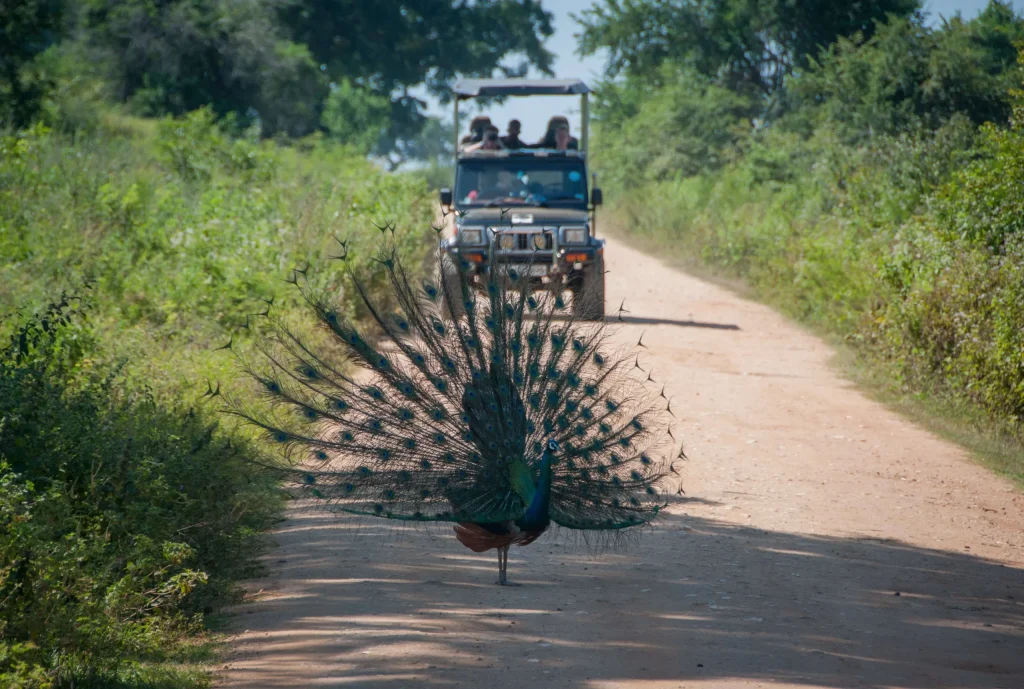
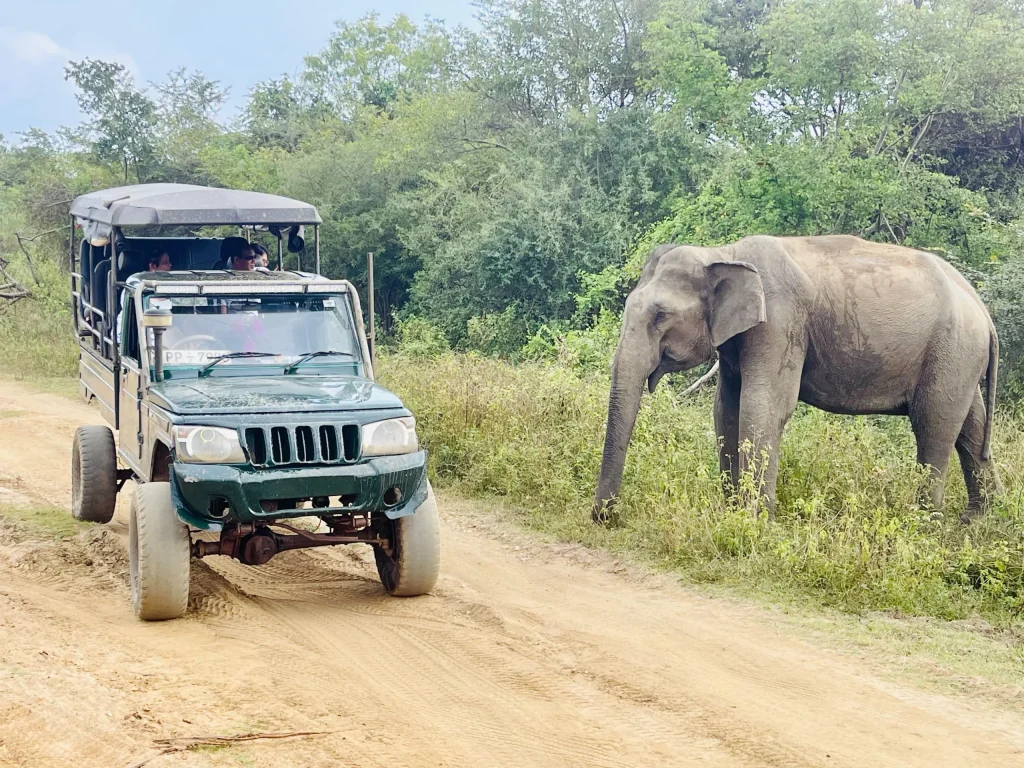
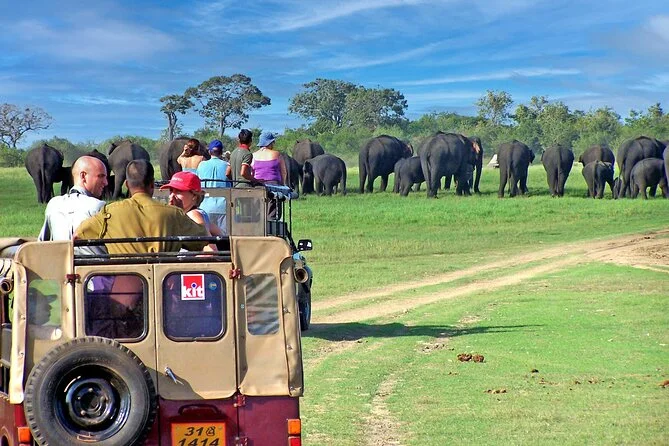
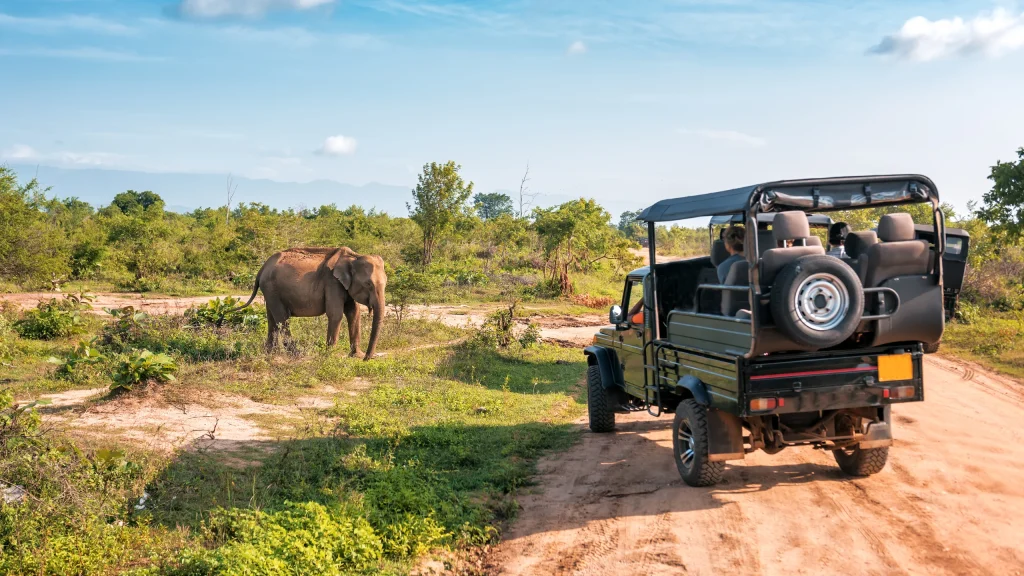
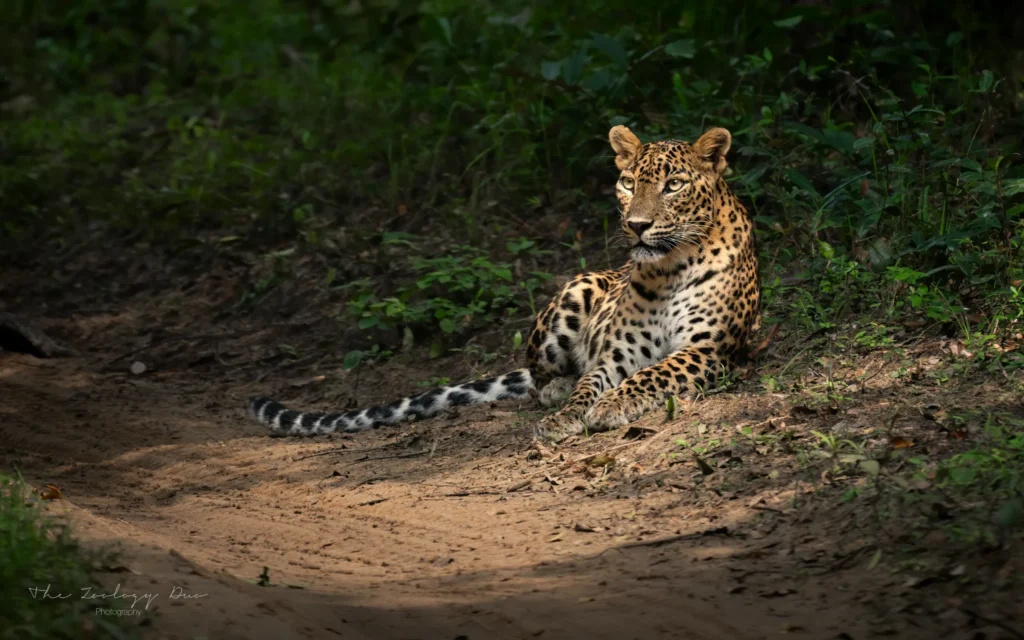
3. Kumana National Park
Location: Eastern Sri Lanka, adjacent to Yala East
Size: 584 square kilometers
Best Time to Visit: February to April
Highlights: Bird sanctuary, estuaries, mangroves, swamps
Kumana National Park is renowned for birdwatching, but it is also a haven for leopard enthusiasts. The park features the Kumbukkan Oya estuary, mangrove forests, and swamps like Kumana Villu, which are essential watering points for wildlife.
Wildlife in Kumana
- Leopards – often well-camouflaged in undergrowth
- Elephants – commonly seen near water sources
- Spotted deer and sambhur deer – prey for leopards
- Rare birds – black-necked storks, painted storks, changeable hawk eagles, egrets, and ibis
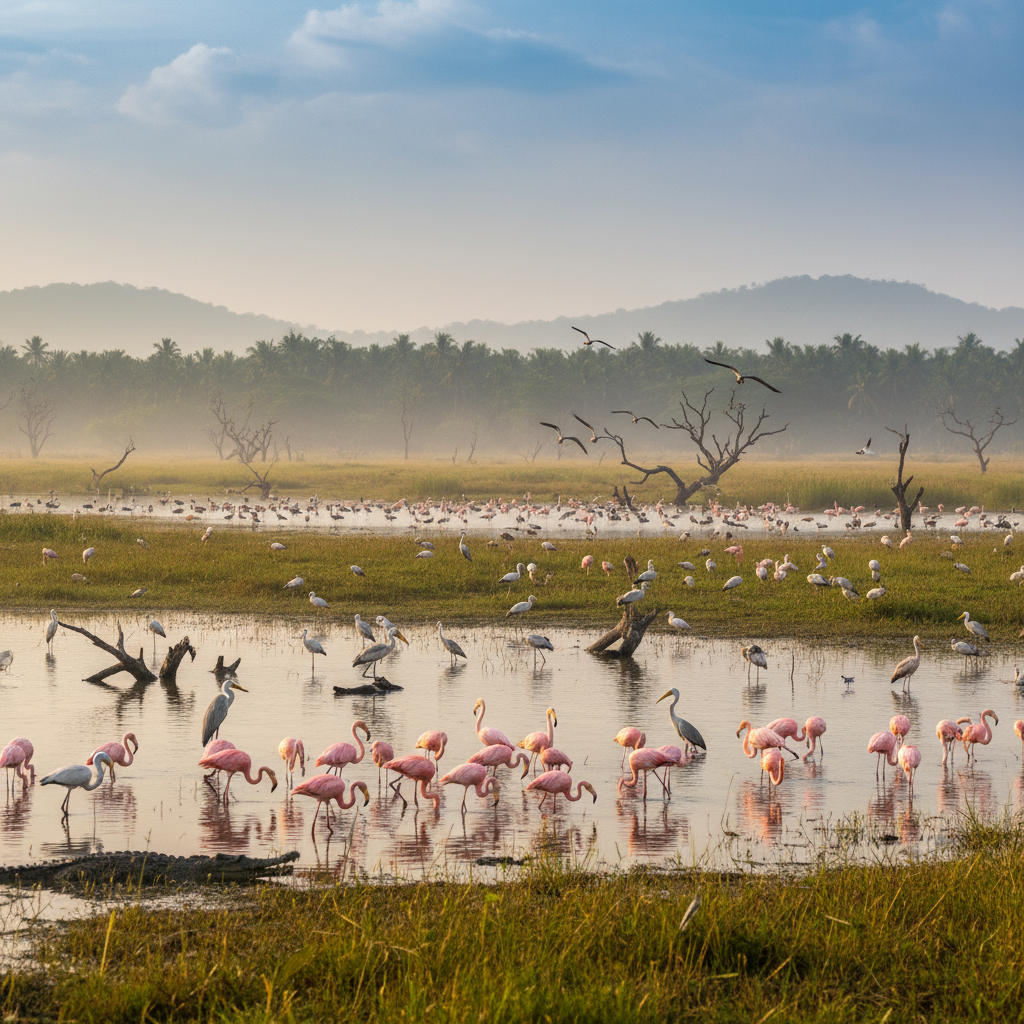
Wildlife here is diverse, including:
- Leopards – often well-camouflaged in undergrowth
- Elephants – commonly seen near water sources
- Spotted deer and sambhur deer – prey for leopards
- Rare birds – black-necked storks, painted storks, changeable hawk eagles, egrets, and ibis
Leopard Safari Experience
Kumana leopards are secretive and highly elusive, but guided jeep safaris improve your chances of spotting them. The park’s lagoons and swamps make it a picturesque location for photography and wildlife observation.
Pro Tip: Patience is key. Leopards may appear suddenly near watering holes or cross safari roads unexpectedly, creating thrilling wildlife moments.
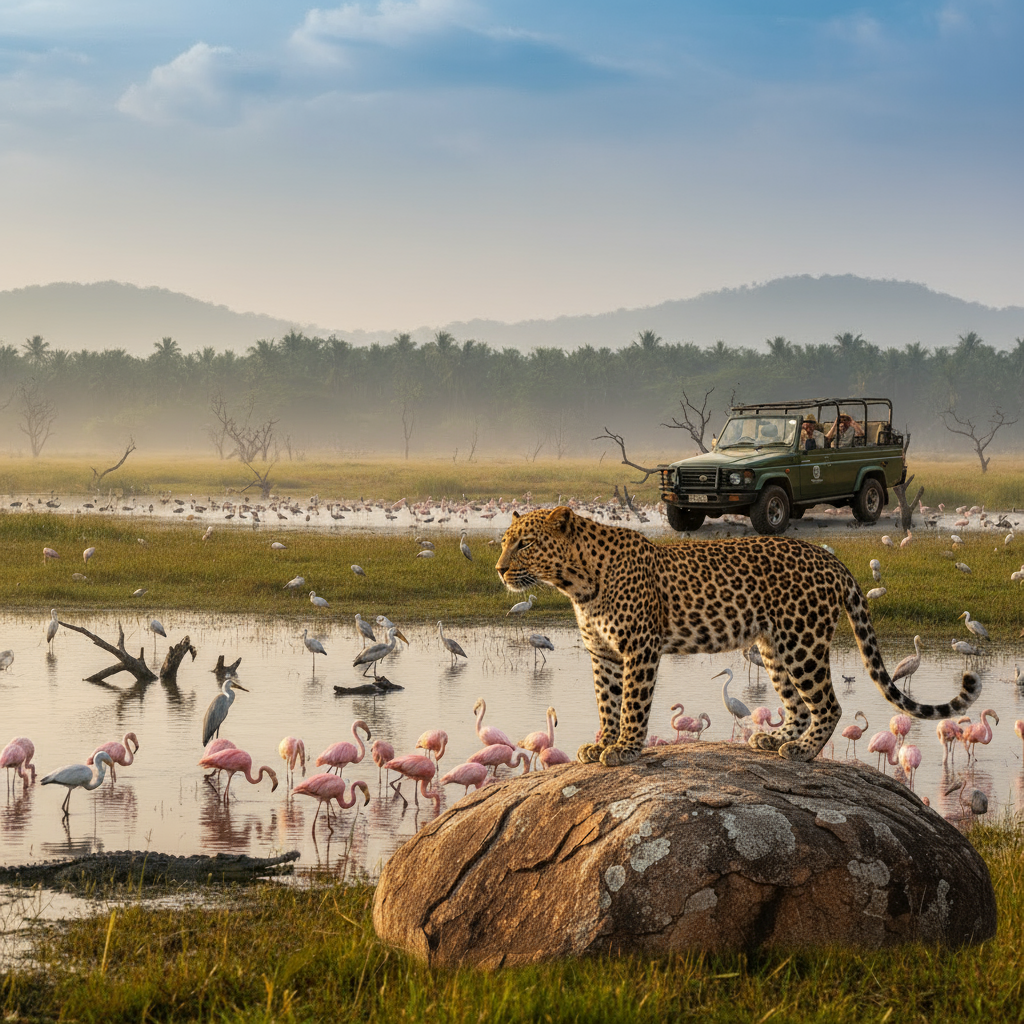
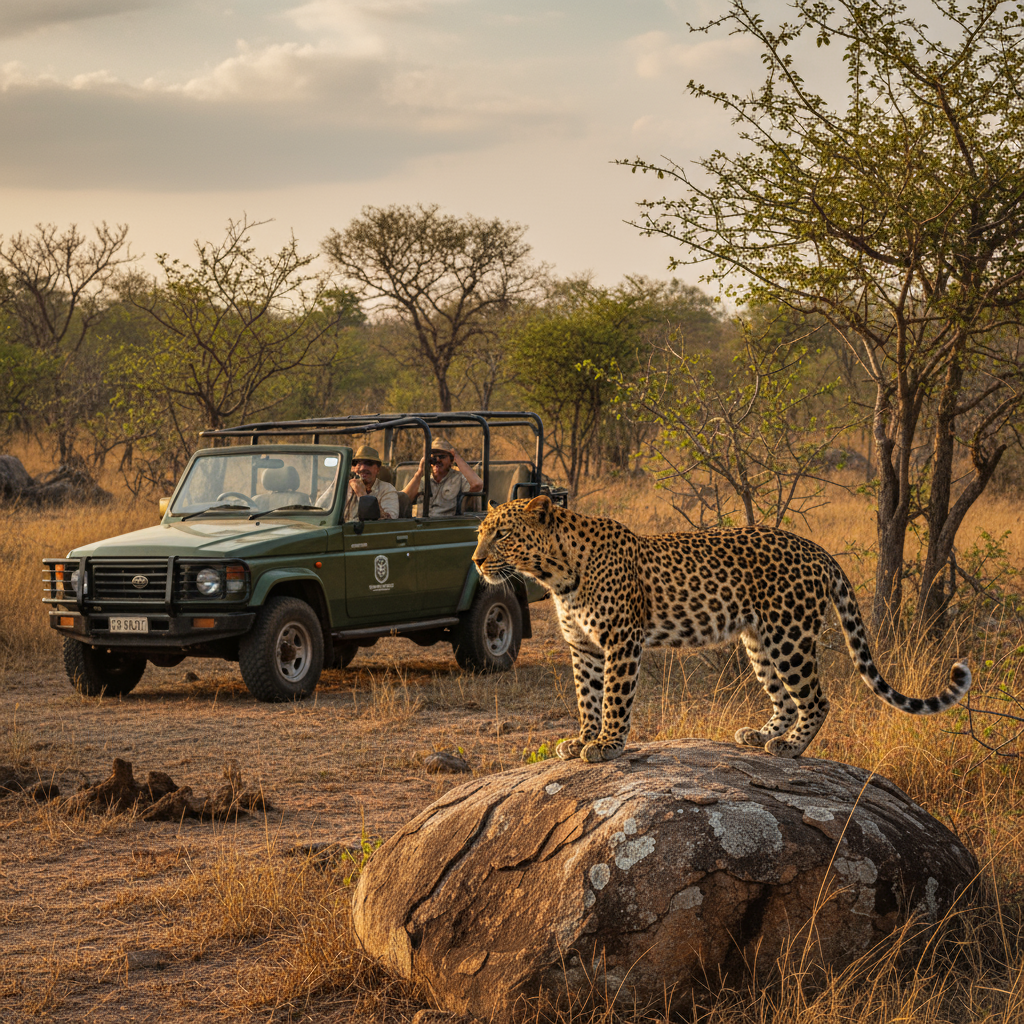
Why Sri Lanka is a Top Leopard Safari Destination
- High Leopard Density: Yala National Park has one of the highest leopard densities in the world, making sightings more likely than in Africa.
- Endangered Species: Sri Lanka is home to the endangered Sri Lankan leopard, unique to the island.
- Diverse Ecosystems: From dry forests to mangroves, the country offers varied habitats supporting rich biodiversity.
- Expert Guides: Trained wildlife guides improve your chances of spotting leopards and other elusive species.
- Eco-Friendly Tourism: National parks prioritize conservation and responsible tourism, ensuring sustainable wildlife experiences.
Safari Tips for Spotting Leopards
- Hire a Professional Guide: Experienced guides track leopards using signs like footprints and markings.
- Visit During Dry Season: Wildlife congregates around waterholes, making sightings easier.
- Use Binoculars and Cameras: Capture animals safely from your jeep.
- Stay Quiet and Patient: Leopards are cautious and may retreat if disturbed.
- Follow Park Rules: Respect wildlife and maintain a safe distance.
Other Wildlife You Might See
Apart from leopards, Sri Lanka’s national parks are home to:
- Elephants: Often in herds near waterholes or open grasslands.
- Sloth Bears: Rare, nocturnal creatures found in dry forests.
- Deer: Spotted deer and sambhur are common prey for leopards.
- Birds: Peacocks, eagles, storks, kingfishers, and migratory species in Kumana.
- Reptiles: Crocodiles, monitor lizards, and snakes in forest and lagoon areas.
How to Plan Your Leopard Safari Trip
- Choose the Right Season: Dry months (February–July) offer the best wildlife sightings.
- Select Your Parks: Yala for leopards, Wilpattu for a quiet safari, Kumana for birds and leopards.
- Book a Jeep Safari: Half-day or full-day safaris are available; guided tours are recommended.
- Accommodation: Stay in eco-lodges or safari camps near the park entrances for convenience.
- Packing Essentials: Binoculars, camera, comfortable clothing, sunscreen, insect repellent, and water bottles.
FAQs About Leopard Safaris in Sri Lanka
Q1. What is the best time to see leopards in Sri Lanka?
A: Leopards are most visible during the dry season (February–July) near waterholes and open grasslands.
Q2. Which national park has the highest leopard population?
A: Yala National Park has the highest leopard density in Sri Lanka and is the best place for sightings.
Q3. Are jeep safaris safe?
A: Yes, guided jeep safaris follow park rules and maintain a safe distance from wildlife.
Q4. Can I see other wildlife besides leopards?
A: Absolutely! Elephants, sloth bears, deer, birds, and reptiles are commonly seen in all three parks.
Q5. How long should a safari last?
A: A half-day safari can provide sightings, but a full-day safari maximizes your chances to see leopards and other animals.
Conclusion
Sri Lanka offers a truly unique wildlife experience, combining breathtaking landscapes with rare and endangered species. From Yala’s high-density leopards to Wilpattu’s serene waterholes and Kumana’s bird-filled lagoons, each park provides a memorable safari adventure.
For wildlife enthusiasts, photographers, and travelers seeking a once-in-a-lifetime experience, a leopard safari in Sri Lanka is not to be missed. Book your safari, hire an experienced guide, and witness the magic of Sri Lanka’s leopards in the wild.

